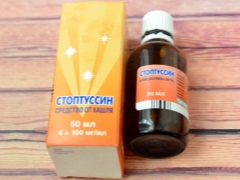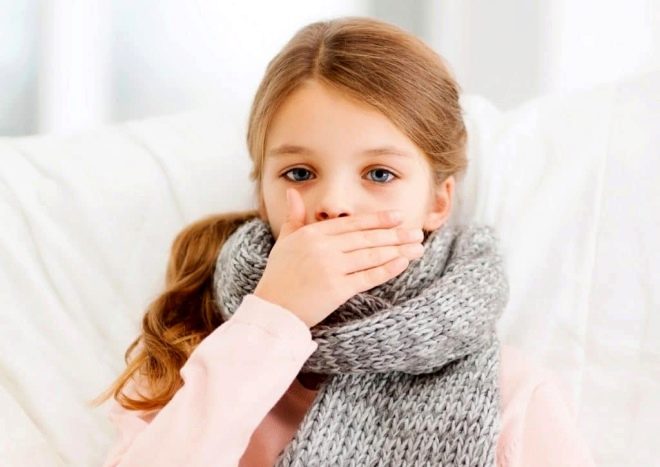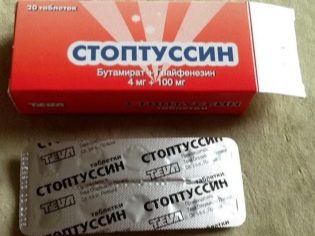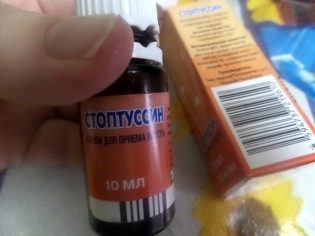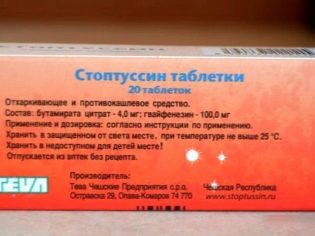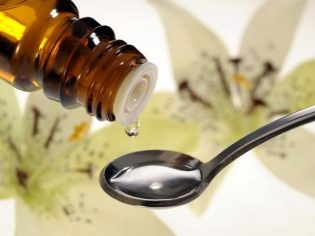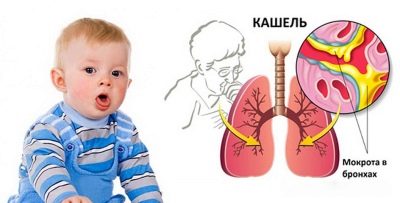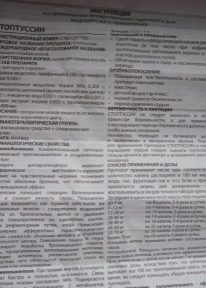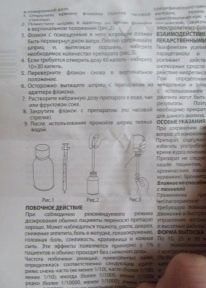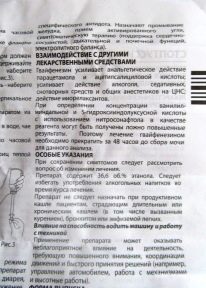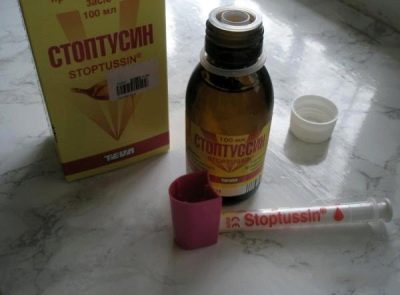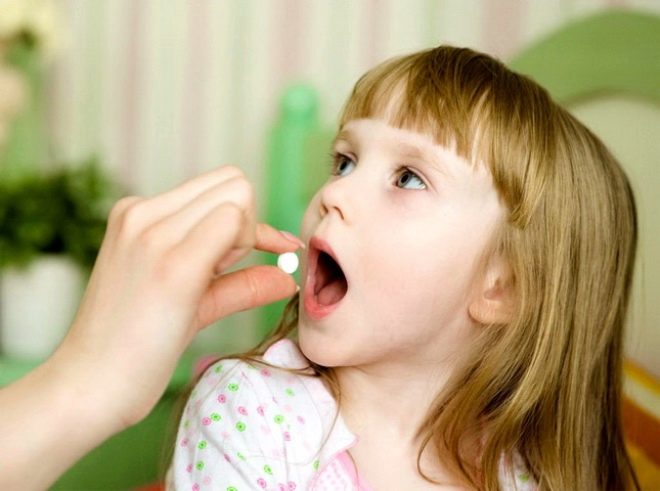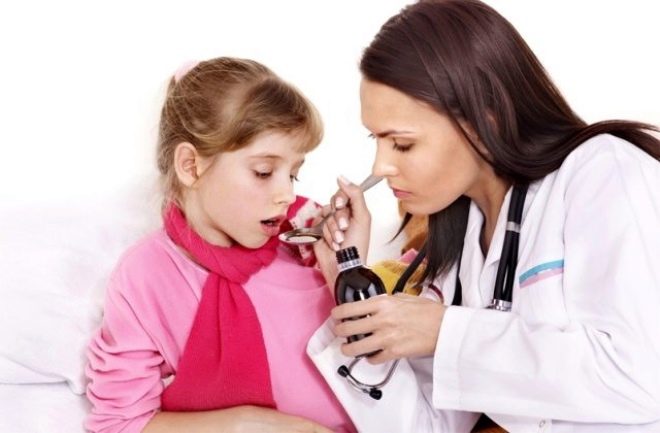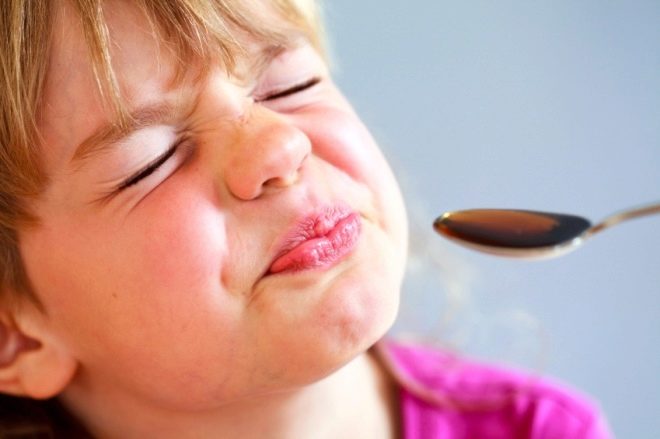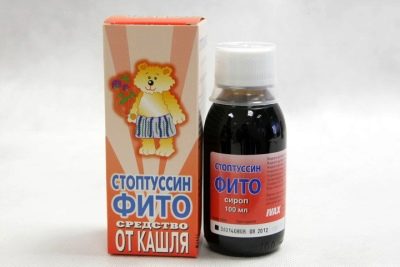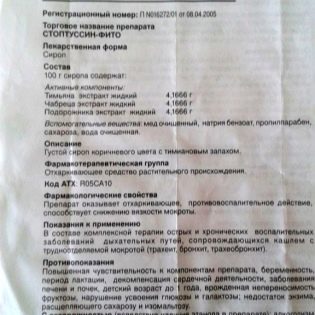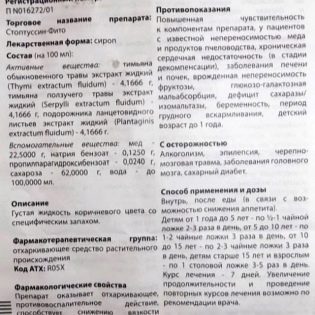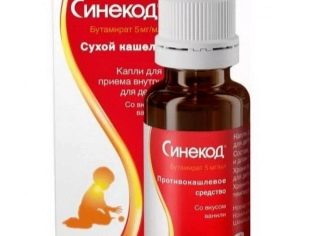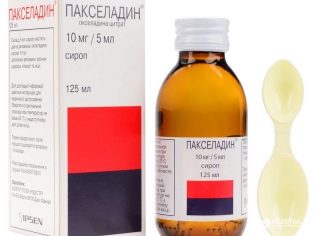Stoptussin for children: instructions for use
The modern drug market offers quite a lot of cough relief products. One of them is Stoptussin. How exactly does this drug help to get rid of cough, when it is in demand, can it be prescribed to children and by what similar means can it be replaced?
Release form
Stoptussin is made in two forms.
- Dropswhich are sold in small glass bottles that have a plastic dropper. Inside one bottle is 10, 25 or 50 ml of a little viscous liquid. It is transparent and has a yellow (sometimes brownish) shade.
- Pillswhich are produced in packs of 20 pieces. Inside the box are two blisters with white cylindrical flat tablets, on the surface of which there is a separation risk.
Composition
Two active compounds are present in each of the forms of Stoptussin. One of them is butamirate in the form of dihydrocitrate. This substance is contained in 1 ml of drops, and in one tablet at a dose of 4 mg. The second active ingredient of the drug is guaifenesin. Its dosage per 1 tablet and 1 ml of the liquid form is 100 mg.
To keep the drops in liquid form and not spoil, they add propylene glycol, 96% ethyl alcohol, purified water and polysorbate 80. Liquid licorice extract and floral flavor are also present in this Stoptussin.
As for the tablet preparation, its auxiliary components are mannitol, trigegenate glyceryl, magnesium stearate, MCC and silicon dioxide.
Operating principle
Since there are two active ingredients in Stoptussin, the effect of the drug will be combined.
- Thanks to butamirata, the drug has an antitussive effect associated with the effect of such a substance on the conduction of impulses from the nerve endings of the bronchial mucosa to the cough center in the brain.
- The presence of guaifenesin gives the drug mucolytic properties, because such a substance can reduce the viscosity of the secretion and stimulate the secretion of mucus by the bronchial glands. The result of such effects will be increased activity of the epithelium and easier release of sputum from the bronchi.
Indications
The drug is used for diseases whose symptom is irritating dry cough with a slight sputum release. The drug is used for tracheitis, pleurisy, bronchitis, laryngitis and other pathologies. It is also prescribed before surgery and in the postoperative period in order to relieve cough.
At what age are children prescribed?
Stoptussin liquid form can be used to treat cough in children from 6 months of age. However, giving such a medicine to a child under one year old or a 2–3 year old baby should be given only after a doctor’s appointment. As for pills, such Stoptussin is prescribed only from 12 years.
If the child is younger, he is prescribed such a drug only in drops.
Contraindications
Stoptussin should not be given to patients with hypersensitivity to guaifenesin, butamirata or any auxiliary component. Such medicine in any form is also contraindicated in myasthenia gravis. Adults are not prescribed for breastfeeding and early pregnancy (in 1 trimester).
Side effects
In the treatment of Stoptussin may appear:
- nausea, diarrhea, poor appetite, abdominal pain, vomiting;
- an allergic rash or other manifestation of allergy;
- drowsiness, dizziness, or headaches.
Very rare side effects of medication are shortness of breath, tachycardia, heartburn, chest pain, unpleasant taste in the mouth and other symptoms. When they occur, you should consult a doctor and pick up another antitussive medication.
Instructions for use
Stoptussin should be taken after meals. If drops are assigned to a child, they are first dissolved in water, tea, or juice — about 100 ml of any of these fluids are taken for a single dose. The tablet means is swallowed without digging through, and then washed down with any liquid.
The medicine is taken 3-4 times a day at intervals of 6-8 hours for drops and 4-6 hours for tablets. A single dose of Stoptussin is determined on the basis of the body weight of the child.
If drops are written out, they are given at once in such quantity:
- children weighing less than 7000 g - 8 drops;
- a child weighing from 7 to 12 kg - 9 drops;
- a child weighing from 12 to 30 kg - 14 drops;
- a child that weighs from 30 to 40 kg - 16 drops;
- a patient with a body weight of 40-50 kg - 25 drops each;
- children weighing from 50 to 70 kg - 30 drops each;
- with a weight of more than 70 kg - 40 drops.
If the baby is more than 6 months old, but it weighs less than 7 kg, then the same 8 drops are diluted in 100 ml of water for such a patient, but they do not give to drink the entire amount of the medicine, but only the amount recommended by the doctor.
You can drop Stoptussin in a container with liquid directly from the bottle, but in some packages of medication there is a syringe with the inscription Stoptussin. The scale on this syringe indicates the number of drops. To take the medicine, the syringe is inserted into the neck of the bottle, and then the bottle is turned over and the piston is pulled out, taking the right dose of medication. Then the bottle is turned back, the syringe is removed and the medicine is poured into juice, water or tea. The syringe itself must be washed in warm water.
A single dosage and frequency of taking Stoptussin tablets also depends on the weight of a child over 12 years old.
- If his body weight is less than 50 kg, then one half of the tablet is given at once, dividing it according to the risk. It is recommended to take medicine to such patient four times a day.
- If the weight of the child is 50-70 kg, then Stoptussin is taken three times a day for the whole tablet.
- With a body weight of over 70 kg per dose, one and a half tablets are required. In this dose, the drug is drunk 3 times a day.
Overdose
Nausea, muscle weakness, drowsiness, or vomiting may occur as a result of non-compliance with the dose prescribed by the doctor or accidental use of the medicine in an excessive amount. Gastric lavage and symptomatic treatment is necessary to eliminate such symptoms.
Interaction with other drugs
Under the action of guaifenesin in the composition of the drug, some drugs show their therapeutic effects more strongly. Among them, paracetamol, sedatives, general anesthetics, muscle relaxants and sleeping pills are noted. Guaifenesin itself is stronger when combined with drugs that contain magnesium or lithium.
Terms of sale and storage
Both types of Stoptussin are classified as over-the-counter drugs, so they can be freely purchased at the pharmacy. The average price of one pack of tablets is 200 rubles, and for drops, depending on the volume of the bottle, you need to pay from 120 to 320 rubles.
Stoptussina shelf life in any form - 5 years. Before it expires, the medicine should be in a place hidden from the sun. The optimal temperature for its storage is considered + 10 + 25 degrees. The drug must be inaccessible to small children.
Reviews
In most reviews of parents and doctors, Stoptussin is described as an effective and affordable remedy that helps with coughing and quickly improves the condition of a sick child.The drug in drops is praised for the possibility of use at an early age and pleasant taste, although some children do not like the medicine, and in some cases its effect is called too weak (the drug did not help to completely remove the cough).
Stoptussin tablets are used less often in children, but when prescribed to adolescents, this remedy is also generally positive.
Stoptussin Phyto
This drug is significantly different from the usual Stoptussin. First of all, its composition, because its action is caused by plant components - liquid extracts of plantain, thyme and thyme. The active substances of these extracts give the drug expectorant properties, so it is discharged with a wet cough, when you want to facilitate the discharge of sputum (for example, with bronchitis or tracheobronchitis).
Stoptussin Phyto is available in the form of a syrup - a thick transparent liquid with a peculiar aroma and brown tint. It is placed in vials in a volume of 100 ml and is sold together with a measuring cap. Such medicine is prescribed to children older than a year and taken after meals:
- if the baby is from 1 to 5 years old, then he can be given half a teaspoon or a whole teaspoon of syrup 2-3 times a day;
- children 5-10 years old give syrup three times 1-2 teaspoons;
- at the age of 10-15 years, the dosage is increased to 2-3 teaspoons per reception and the drug is given 3 times a day;
- if a child is more than 15 years old, a single dose for him will be 1 tablespoon of syrup, and you can take the medicine up to 5 times a day.
On average, Stoptussin Phyto is taken for 7 days, and if the medication does not help, a longer treatment is discussed with the doctor.
This drug is contraindicated in severe kidney or liver diseases, hereditary pathologies of carbohydrate absorption or intolerance to any of the ingredients. Among the side effects of the drug are only allergic reactions. Stoptussin Phyto is sold without a prescription, one bottle costs on average 200 rubles, and the shelf life of this syrup is 4 years.
Analogs
Replacing Stoptussina may be another tool with antitussive effect. Among them in the treatment of children most often used the following.
- Sinekod. The effect of this medication is also provided by butamirata, but, unlike Stoptussin, it is the only active ingredient. The smallest Sinekod discharged in drops, because this form is allowed to use even in infants older than 2 months. Children can also be given medicine in syrup, but due to the higher dose of butamirate, such a synecod is contraindicated until the age of 3 years. Analogues of this drug are drugs. Codelac Neo and Omnitus.
- Pakseladin. The basis of this drug is okseladin - a substance that can affect cough nerve centers. At the same time, it does not inhibit the respiratory center and does not have a hypnotic effect. The drug is available in syrup, prescribed to children older than 30 months, if their weight exceeds the mark of 15 kg.
- Codelac. This remedy in tablets effectively suppresses the cough reflex at the expense of codeine, and the presence of sodium bicarbonate in the preparation and extracts from licorice and thermopsis gives the drug expectorant properties. In childhood, this medicine is prescribed for dry cough in patients older than 2 years.
- Libexin. Preenoxdiazine present in these tablets acts on the receptors located in the bronchi, thereby helping to get rid of unproductive cough. Children are prescribed this medication carefully and give only after prescribing a doctor.
About norms and pathologies of cough in children, see the following video.
